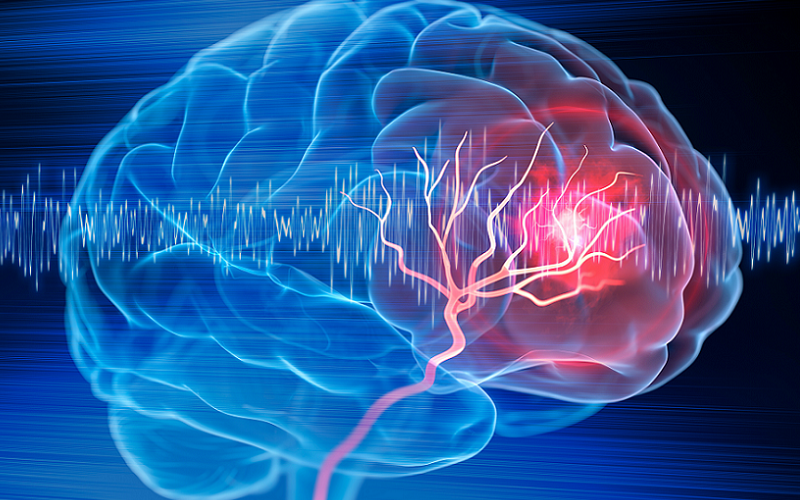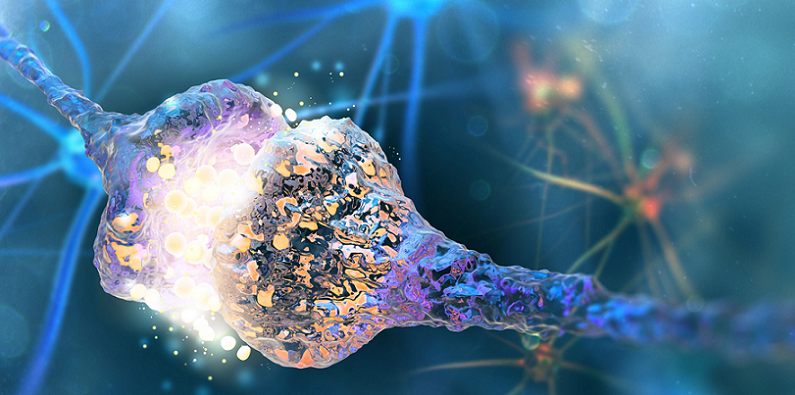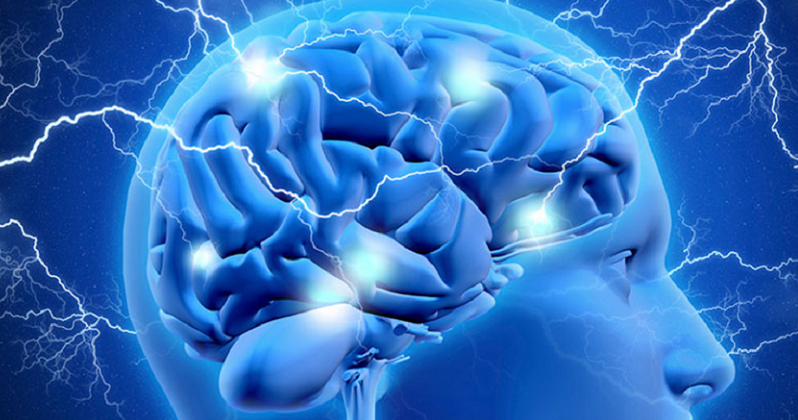
In the ever-evolving landscape of neuroscience, neuromodulation stands out as a frontier of innovation, offering new horizons in understanding and enhancing cognitive function. This fascinating realm, where technology meets neural circuitry, has the potential to revolutionize the way we approach brain health and cognitive disorders. Neuromodulation encompasses a variety of techniques designed to alter neural activity, with the aim of improving or restoring function through targeted stimulation of specific areas in the brain.
From deep brain stimulation to transcranial magnetic stimulation, these advanced interventions are not only shedding light on the complex workings of the human brain but are also providing promising treatments for a range of neurological and psychological conditions.
Contents
Introduction to Neuromodulation
The human brain, a complex and enigmatic organ, orchestrates every thought, emotion, and memory we experience. At the heart of this intricate system lies neuromodulation, a revolutionary field that has emerged as a beacon of hope and innovation in the realm of cognitive health and neuroscience. Neuromodulation involves the use of various techniques to directly alter neuronal activity, aiming to unlock new potentials in the treatment and understanding of cognitive functions.
Definition of Neuromodulation
Neuromodulation refers to the process of regulating the nervous system’s activity through targeted stimulation. This can be achieved through electrical impulses, magnetic fields, or even chemical agents, each designed to modulate neural activity in specific areas of the brain. The primary goal of neuromodulation is to restore or enhance neural pathways and circuits, potentially improving or altering cognitive functions and outcomes in individuals with neurological conditions.
Overview of Neuromodulation Techniques
Neuromodulation encompasses a broad spectrum of techniques, each with its unique approach to influencing brain activity. These techniques range from invasive procedures, such as deep brain stimulation (DBS), to non-invasive methods, like transcranial magnetic stimulation (TMS) and transcranial direct current stimulation (tDCS). The choice of technique depends on various factors, including the specific condition being treated, the targeted area of the brain, and the desired outcome.
Importance of Neuromodulation in Cognitive Health
In the context of cognitive health, neuromodulation holds immense promise. It offers novel pathways for enhancing cognitive abilities, treating mental health disorders, and improving the quality of life for individuals with neurological impairments. By directly influencing brain activity, neuromodulation can lead to significant improvements in functions such as memory, attention, and problem-solving skills. It opens up new avenues for research into the underlying mechanisms of cognitive processes and their disorders, paving the way for more effective treatments and interventions.
The Science Behind Neuromodulation
Digging into the science behind neuromodulation requires a foundational understanding of how neurons and neural networks operate within the brain.
Understanding Neurons and Neural Networks
At the core of neuromodulation lies the neuron, the basic unit of the brain and nervous system. Neurons communicate with each other through synapses, using electrical impulses and chemical signals to transmit information across vast networks. These neural networks form the basis of everything from simple reflexes to complex thoughts and emotions. Understanding how neurons and neural networks function is crucial for grasping how neuromodulation techniques can alter brain activity to produce desired cognitive and therapeutic outcomes [1].
Mechanisms of Neuromodulation
Neuromodulation acts on the nervous system in a variety of ways, fundamentally altering the way neurons communicate with each other. Here, we explore the two primary mechanisms: chemical neuromodulators and electrical neuromodulation techniques.
Chemical Neuromodulators
Chemical neuromodulators, such as neurotransmitters and hormones, play a vital role in the brain’s communication system. They can amplify or dampen the signals between neurons, influencing mood, sensation, thought, and movement. By adjusting the levels or actions of these chemicals, certain neuromodulation therapies can help rebalance brain activity, addressing conditions like depression, anxiety, and chronic pain.
Electrical Neuromodulation Techniques
Electrical neuromodulation involves the direct application of electrical currents to specific brain regions. Techniques such as deep brain stimulation (DBS) and transcranial direct current stimulation (tDCS) leverage electrical impulses to modulate neural activity. This can enhance or inhibit neuronal firing, depending on the parameters set by the clinician. Electrical neuromodulation offers precise control over the targeted brain areas, making it a powerful tool for treating various neurological and psychiatric disorders.
The Role of Neuroplasticity
Neuroplasticity, or the brain’s ability to reorganize itself by forming new neural connections, is a key factor in the effectiveness of neuromodulation. This adaptability allows the brain to recover from injuries, adapt to new situations, and improve cognitive functions. Neuromodulation techniques can stimulate neuroplastic changes, enhancing the brain’s natural capacity to learn, remember, and adapt. By promoting neuroplasticity, neuromodulation not only offers therapeutic benefits but also opens up possibilities for cognitive enhancement and rehabilitation [2].

Types of Neuromodulation Techniques
Neuromodulation encompasses a variety of techniques, each harnessing different methods to influence brain activity and achieve therapeutic goals.
Deep Brain Stimulation (DBS)
Deep Brain Stimulation (DBS) is a surgical neuromodulation technique that involves implanting electrodes in specific areas of the brain. These electrodes deliver electrical impulses that regulate abnormal impulses, or alter brain activity in a controlled manner. DBS is primarily used for the treatment of movement disorders such as Parkinson’s disease, dystonia, and tremors, as well as obsessive-compulsive disorder (OCD). By targeting specific brain circuits, DBS can significantly reduce symptoms and improve quality of life for patients with these conditions.
Transcranial Magnetic Stimulation (TMS)
Transcranial Magnetic Stimulation (TMS) is a non-invasive procedure that uses magnetic fields to stimulate nerve cells in the brain. It is commonly used to treat depression and has been explored for other conditions, including anxiety, stroke rehabilitation, and chronic pain. TMS works by inducing a small electric current in a specific part of the brain, influencing neuronal activity and modulating mood-related circuits. Its non-invasive nature and targeted approach make TMS an appealing option for patients seeking alternatives to medication or surgery [3].
Transcranial Direct Current Stimulation (tDCS)
Transcranial Direct Current Stimulation (tDCS) is another non-invasive technique that applies a low, constant current to the brain through electrodes placed on the scalp. tDCS aims to enhance or inhibit neuronal activity, depending on the direction of the current.
It has been investigated for a wide range of applications, including cognitive enhancement, depression treatment, and recovery from stroke. tDCS is particularly noted for its potential to improve cognitive functions such as memory, attention, and learning in healthy individuals and those with cognitive impairments.
Vagus Nerve Stimulation (VNS)
Vagus Nerve Stimulation (VNS) involves delivering electrical impulses to the vagus nerve, a crucial part of the autonomic nervous system that extends from the brain to the abdomen. Primarily used for treating epilepsy and treatment-resistant depression, VNS can influence various brain areas involved in mood and seizure control. By modulating the activity of the vagus nerve, VNS has shown promise in reducing the frequency of seizures and improving mood in affected individuals.
Comparative Analysis of Techniques
Each neuromodulation technique offers distinct advantages and limitations, making the choice of method highly dependent on the patient’s specific condition, treatment goals, and tolerance for invasiveness. DBS, being invasive, is typically reserved for severe cases where other treatments have failed.
In contrast, TMS and tDCS offer non-invasive alternatives with fewer side effects, suitable for a broader range of conditions. VNS occupies a unique niche, providing a systemic approach to neuromodulation with applications in both neurological and psychiatric disorders.

Cognitive Implications of Neuromodulation
The exploration of neuromodulation techniques not only unveils new methods for treating neurological disorders but also opens up fascinating possibilities for enhancing cognitive functions.
Enhancing Learning and Memory
Neuromodulation has shown promising results in enhancing cognitive functions, particularly learning and memory. Techniques such as transcranial direct current stimulation (tDCS) and transcranial magnetic stimulation (TMS) have been studied for their ability to improve synaptic plasticity—the brain’s capacity to form and reorganize connections in response to learning and experience. By targeting specific brain regions involved in memory storage and retrieval, neuromodulation can potentially enhance these cognitive processes, offering exciting prospects for educational applications and for individuals seeking cognitive enhancement [4].
Treatment of Neurological Disorders
Neuromodulation plays a pivotal role in the treatment of various neurological disorders, with significant implications for cognitive health. Here, we explore the impact of neuromodulation on conditions like depression, epilepsy, and Parkinson’s disease.
Depression
For individuals suffering from depression, neuromodulation techniques such as TMS and VNS offer alternative treatment options when traditional medications are ineffective. By targeting areas of the brain associated with mood regulation, these techniques can alleviate symptoms of depression, leading to improved cognitive function and overall well-being.
Epilepsy
Epilepsy, characterized by recurrent seizures, can severely impact cognitive functions over time. Vagus nerve stimulation (VNS) and deep brain stimulation (DBS) are neuromodulation strategies that have shown efficacy in reducing seizure frequency and intensity, thereby minimizing cognitive decline associated with this condition.
Parkinson’s Disease
Parkinson’s disease affects motor function primarily but also has cognitive implications. Deep brain stimulation (DBS) has been a breakthrough in managing the motor symptoms of Parkinson’s, and its effects on cognitive aspects are increasingly being recognized. By improving motor function, DBS can indirectly enhance cognitive abilities, such as attention and executive function, in affected individuals [5].
The Impact on Attention and Concentration
Neuromodulation has the potential to improve attention and concentration, key components of cognitive functioning. Techniques like tDCS have been explored for their ability to enhance prefrontal cortex activity, leading to improved attentional control and concentration. These improvements can have broad implications, from enhancing academic performance to improving productivity in various aspects of life.
Potential Risks and Ethical Considerations
While the cognitive implications of neuromodulation are largely positive, it’s essential to consider the potential risks and ethical concerns. Issues such as the long-term effects of brain stimulation, the potential for cognitive enhancement to create inequalities, and the ethical implications of altering brain function in healthy individuals are critical considerations. Ensuring that neuromodulation is used responsibly and ethically will be paramount as the field progresses.
References
[1] Effects of neuromodulation on cognitive and emotional responses
[2] Cognitive Enhancement via Neuromodulation
[3] Neuromodulation of prefrontal cortex cognitive function
[4] Neuromodulation through brain stimulation-assisted cognitive training
[5] Effects of Non-invasive Neuromodulation on Executive and Other Cognitive Functions

